This week we want to hear how you're doing with your New Year's Resolutions as we investigate the psychology of willpower and how long it takes to form a new habit. In the news, does drinking a cup of coffee after studying help students remember their work? Should the UK introduce a minimum price for alcohol? Plus the light activated glue that could change the way cardiac surgery operates.
In this episode
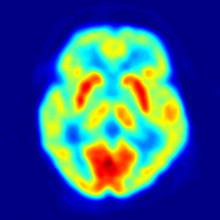
01:29 - Caffeine consolidates memory
Caffeine consolidates memory
People have long used caffeine to help them stay awake and study for exams, but new research says it may be doing more than just keeping you alert. According to a paper published in Nature  Neuroscience this week, caffeine can actually improve memory formation.
Neuroscience this week, caffeine can actually improve memory formation.
Johns Hopkins University researcher Daniel Borota and his colleagues asked a group of volunteers to categorise pictures into things you use inside or outside the house, and then gave them either caffeine, or a placebo.
A day later, the subjects were brought back, shown another set of pictures, and asked to identify whether each was one they'd been shown before, a new image, or one very similar to a picture they had seen the day before.
Both the caffeine and placebo groups were equally good at categorising the old and new pictures, but participants dosed with caffeine the day before were significantly better at recognising pictures that were similar.
This suggests that the caffeine, given immediately after they had first seen the pictures, had helped them form clearer memories, a process known as consolidation. Giving caffeine a day after seeing the pictures, on the other hand, had no effect.
The researchers also tried different doses of caffeine. One hundred milligrams (mg), which is roughly equivalent to 1 shot of coffee-shop espresso, had no measurable effect. But 200 and 300mg doses, correponding to two to three cups of coffee, produced the improvement in recall.
The team aren't certain why caffeine helps memory consolidation, although it seems to have this effect in other animals as well as in humans.
Caffeine blocks adenosine, which is linked to feelings of fatigue and weariness. This might improve alertness and therefore boost the attentiveness of the subjects towards the picture task, thereby improving consolidation.
Alternatively, caffeine could be acting directly to boost activity in the brain's hippocampus, which is a key site for memory formation.
Further work is needed to find out the mechanism, but it certainly seems that a cup of coffee when you are revising could help recall you later rely on...
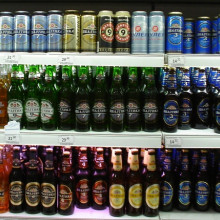
06:25 - Would minimum pricing for alcohol work?
Would minimum pricing for alcohol work?
A minimum per-unit price for alcohol, mooted by the UK government to combat problem drinking, was subsequently dropped in July 2013, despite evidence that such a strategy would effectively cut  consumption amongst heavier users of alcohol. But what is the evidence that approaches like this work?
consumption amongst heavier users of alcohol. But what is the evidence that approaches like this work?
According to a recent report in the British Medical Journal (BMJ), the stance taken by the UK government not to introduce a minimum price tag per unit suggests that ministers were "under the influence" of industry insiders, who lobbied against the introduction of such a levy.
However, the case for a 50 pence-per-unit tariff (up from the present 39p), looks compelling, as this commentary, by Southhampton hepatologist Nick Sherin, and Kate Eisenstein, policy adviser at the Royal College of Physicians, outlines:
"The mean weekly alcohol consumption of patients with alcoholic cirrhosis is around 15 bottles of white wine or 5 bottles of vodka, 20 litres of super strong lager, or 20 litres of strong white cider brewed from fructose syrup. As a result, irrespective of income, these very heavy drinkers opt for the cheapest possible alcohol--currently around 30 pence (EUR0.36; $0.49) per unit. The average low risk drinker already pays around £1/unit of alcohol and so the impact of minimum unit pricing on low risk drinkers is negligible, and on pubs it is zero. A minimum price of 50p per unit of alcohol would mean that a 700 ml bottle of vodka with a typical alcohol content of 40% would cost at least £14, making it difficult for the heaviest drinkers to maintain their alcohol consumption without substantially increasing their expenditure.
All purchase taxes are regressive; they affect deprived communities more severely. But the effect of alcohol related harm on deprived communities is savage--a threefold excess mortality between the most deprived and least deprived socioeconomic groups. Taxpayers are already paying for the harm that alcohol causes. According to the Organisation for Economic Cooperation and Development alcohol misuse currently costs the UK 2-3% of gross domestic product; this equates to around £12 a week for each of the 60 million or so UK inhabitants, of which £3 comes back from the drinks industry in taxes. Moderate drinkers and non-drinkers in the UK are effectively subsidising heavy drinkers to the tune of around £9 a week.
The fiscal alternative to minimum pricing is a general increase in alcohol duty, and it is precisely because minimum unit pricing is so highly targeted that it is so effective. In Canada, where they have had minimum unit pricing for years, a 10% increase in the minimum price resulted in a 32% decrease in directly attributable alcohol related mortality. In the Canadian province of Saskatchewan a 10% increase in minimum unit prices reduced consumption of beer by 10.1%, spirits by 5.9%, and wine by 4.6%..." (from Commentary: Minimum unit price--how the evidence stacks up, BMJ 2014;348:g6)
As the commentators highlight, the impact on the pockets of such a measure would be minimal for more discerning, moderate drinkers and pub-goers, who already pay a higher price than the proposed minimum.
They do not, however, dwell on what steps retailers might take to compensate for any loss of revenue incurred through sales reductions. Loading these costs onto higher-priced or more premium beverages could see more reserved drinkers paying more in the longer term.
But since it appears I'm already paying £9 towards the nation's heavy-drinking habits, what's a few quid more?

10:43 - Polar Vortices
Polar Vortices
This week, Hell literally froze over, as the small Michigan town of Hell experienced temperatures of minus 17 degrees Celsius. And Hell wasn't alone temperatures across the United States have plummeted to record lows as cold air from the Arctic has reached much lower latitudes than is usual...
To explain how this has come about, here's your Quick Fire Science about the polar vortices with Kate Lamble and Dominic Ford.
- Around the Arctic and Antarctic, air rotates in structures called polar vortices which mix very little with air at lower latitudes.
- In Antarctica, this mass of air is so enclosed that very little warm wet air ever blows in with any likelihood of forming rain.
- As a result, only a few centimetres of snow fall across Antarctica each year, meaning that much of the continent is officially classified as a desert.
- A similar Arctic polar vortex is normally centred around Baffin Island in northern Canada.
- But in recent days, a weather system over the Pacific has pushed northwards, forcing part of the polar vortex south over the US and Canada.
- In North Dakota's largest city of Fargo, this has led to temperatures have plunged as low as -35C -- cold enough that frostbite can set in even underneath clothing.
- In Indianopolis meanwhile, all non-emergency driving has been banned, and people have been urged to stay indoors.
- In 2010, a similar migration of the Arctic polar vortex led to incredibly harsh weather across Europe.
- As the fast moving belt of air which serves as the boundary between warmer southern air and cold polar air is driven by temperature differences it weakens when the arctic is at higher temperatures
- The Arctic is currently warming more rapidly than lower latitudes, and White House Science Advisor Dr. John Holdren argues that this makes the polar vortex's boundary less well defined, increasing the chances of cold air passing over the US and Europe.
- As a result, he argues that global warming could, rather counter-intuitively, lead to more extreme cold spells in the future.
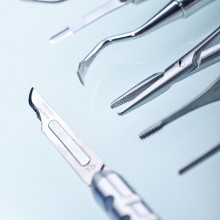
13:37 - Light-activated glue heals hearts
Light-activated glue heals hearts
with Jeffrey Karp, Brigham and Women's Hospital, Harvard Medical School
When surgeons need to operate on the heart and cardiovascular system, minimally invasive procedures are often the best way to avoid complications and reduce recovery time for patients. But if you reduce the space that you're working in, you also reduce the space you have to use sutures and staples. This week a team announced they had developed a light-activated blood-resistant glue for use in just these scenarios. We were joined by Jeffrey Karp from the Harvard Medical School...
Chris - So what is wrong with the glues that currently surgeons and doctors have to use on tissue? Why do you need to invent a new one?
Jeffrey - Sure. Well you know, we've been using staples and sutures for decades and there's been really minimal innovation. They have inherent limitations. As you mentioned, they're difficult to place in small spaces like during laparoscopic or minimally invasive procedures. Also for glues, there's very few glues that actually have been approved for medical use. One example of a glue that's approved is a medical grade crazy glue or super glue. It's only been approved for minimal uses. When you use it inside the body, you actually have to dry the tissue before you apply it because it's just so highly reactive. And so, this essentially means you can't use it for most applications that clinicians would like.
Chris - So, what inspired you to solve some of those problems and come up with this new glue?
Jeffrey - So, I've been working closely with Dr. Pedro del Nido who's the Chief of Cardiac Surgery at Boston Children's Hospital. He's been trying to seal septal defects which are holes that occur between the chambers of the heart and 1 in 100 babies that are born have some form of congenital defect. The ones that require surgery typically, a non-degradable device is put in and it needs to be changed every few years because it just doesn't grow with the patient. And so, what we were interested in doing is coming up with a new type of adhesive that would allow us to seal these holes using fully biodegradable materials that would work in the presence of blood in such a challenging environment inside the heart.
And so, what we did initially is we came up with a long list of design criteria for a solution and we wanted the material to be biodegradable. We wanted it to be elastic because the heart continuously expands and contracts, multiple cycles. We wanted it to be non-inflammatory so when we would implant it, it wouldn't promote a strong inflammatory response. And then we also turned to nature for some inspiration. So, if we look into nature, there's many examples of insects and other critters on land and even in the ocean. What we noticed is that, if you look at these collectively, many of these creatures have secretions and those secretions are highly viscous. So, when they are placed onto a surface, they don't really move too much. If you look carefully at these secretions, they also contain agents that repel water. And so, what we thought would be, "Could we develop something that would initially be very viscous, kind of like honey, but then also, repel blood and water away from a surface?" So, as soon as you applied it to a tissue, it would repel the blood away from that tissue and then it would stay there even in flowing blood conditions such as inside the heart.
Chris - How would you deploy it? So, if you had a defect in the heart as you have outlined in these children, how would you get the glue into the right place and then make it set?
Jeffrey - So, this is something that we've thought quite a bit about. So, we designed this glue with that in mind. So, the idea is that because it's viscous, it's in a liquid state. So, we can inject it. We can even paint it on. We potentially could spray it. We've also shown that we can place this onto the surface of a patch-like material and then we can deploy this. So, in some instances, we may use the glue alone by injecting through a minimally invasive device for example. In other instances, we can coat it on the surface of a patch and even a biodegradable patch so the entire system, the glue, and the patch will degrade.
Chris - How sticky is it because the pressures generated for instance in the heart or an artery are extremely high, can it withstand that?
Jeffrey - Absolutely. So, that was one of the other design criterias is that not only do we want this to stick, but it needs to be strong enough to close holes in these dynamic environments. And so, in one example, we actually created a hole in a rat heart and then we were able to seal it. So, it was a sizeable hole in the heart of the rat. We were able to seal that wtih just pure glue alone. We took the animals out to 6 months and they did fine.
Chris - Is there not a risk that this stuff, being very sticky but also being very gelatinous could break off from where you've deployed it and then go down a blood vessel and effectively block up a blood vessel, therefore, depriving the tissue downstream of oxygen and blood flow?
Jeffrey - Sure. There's always these types of risks exist, but what we were able to show in our studies is first of all, we didn't see such instances of these types of complications occurring. And also, these materials are very biocompatible. What that means is that cells and tissue can grow over them very quickly. And so, right after we place this glue into the heart or onto the surface of a blood vessel for example, within just a few days, it's already starting to be coated with cells and other tissue. So, that will significantly limit the potential for chunks to break off, as you say, and cause an embolism or a stroke.
Chris - And how do you actually make the glue set where you want it to?
Jeffrey - What happens is that wherever we inject the glue, as soon as it hits a surface, because it's so viscous, it just stays there. Then also, what we found which was quite fascinating is that the glue is able to penetrate into the tissue. So, it actually goes into the tissue fibres and then when we shine UV light, this actually cures and locks the glue into place.
Chris - And there's no danger to the tissue through having ultraviolet light shone on it?
Jeffrey - We've shown that we can shine a fairly low level of intensity of light over a short period of time. So typically, it only takes maybe 5 to 30 seconds to get a complete cure. So we, in our initial experiments, we actually looked at this in extensive detail and found intensities of light that did damage the tissue. But then we were able to scale that back and it still achieved a strong fast cure without doing damage to the tissue.
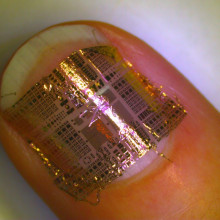
19:50 - Super-thin, flexible electronics
Super-thin, flexible electronics
Researchers at the Swiss Federal Institute of Technology have found a way to make super-thin, flexible electronics which can be applied to almost any surface...
In this paper, published in Nature Communications, the thin film transistors are machined onto a film of a material called parylene only 1 micrometre - just a thousandth of a millimetre - thick.
To hold the film in place while this was being done, they attached it to a piece of silicon. The clever bit is that the glue they used to attach the film to the silicon is soluble, so once they have made the thin film transistor, they can pop it in some water, and the silicon wafer falls off as the glue dissolves, leaving just the film floating on the water.
Parylene was chosen because it is bio-compatible, and can be attached to a wide variety of materials, from textiles and implantable devices to plant leaves and human skin, giving a huge range of possible applications.
Both transparent and not transparent versions of the transistors were made, widening their possible uses even further. These devices could withstand bending over human hairs, and even putting them on a piece of foil before repeatedly being crumpled and flattened.
Both the transparent and non-transparent versions worked fine when bent over the hair, and while only the non-transparent one survived the foil test, it was a pretty extreme challenge, so still a win for the scientists overall!
Because the membrane is so thin, light, and biocompatible, there are a huge number of possible uses for the technology.
One idea being explored is to use the devices to detect strain to a plastic contact lens that could be used to monitor eye diseases like glaucoma.
22:29 - How can I resist temptation?
How can I resist temptation?
with Molly Crockett, University College London
Ginny - Our first guest tonight is Molly Crockett from the Wellcome Trust Centre for Neuroimaging at University College London. Hi there, Molly.
Molly - Hello.
Ginny - Now, as part of your work, you investigate willpower and that's something that everyone needs when they're trying to stick to their New Year's resolutions. It's so difficult to resist that tempting bar of chocolate when you're trying to eat healthily. Why is it so tricky?
Molly - Well, it's a classic example of a conflict between our long term goals and our short term goals. The problem is that when we're trying to resist a temptation that's right in front of us, that short term goal is really smacking us in the face and the long term goal is more distant in our minds.
Ginny - So, we've got the short term goal of, "Chocolate is tasty. I really want to eat it" and that's almost overpowering our long term, "No, I'm trying to be healthy. I should be eating my greens" that sort of thing.
Molly - Exactly.
Ginny - What parts of the brain are actually involved of the two different bits that are trying to take over?
Molly - Well generally, we see willpower in the brain as involving a competition between brain structures that are involved in reward processing including the ventral striatum and the medial prefrontal cortex, and brain structures that are involved in self-control, and sort of inhibitory control that includes the more lateral aspects of prefrontal cortex including the dorsolateral and inferior frontal gyrus.
Ginny - So, is there anything we can do to make it easier for ourselves if we are trying to stick to a New Year's resolution? What can we do to prevent this temptation from taking over?
Molly - Well, we found a number of studies looking at this and willpower is of course the main strategy that we think of when we think about self-control. But it turns out that there's another strategy that we can use that actually can be more effective than willpower. So, willpower of course is when we're using our self-control to resist something that's right in front of us. But there's another strategy called pre-commitment and that's when we take steps now to prevent our future self from being exposed to temptation in the first place. So, the best example of this is, if you want to avoid eating unhealthy foods, you just don't buy them at the shop in the first place so that they're not even around to tempt you. We've done some experiments to show that pre-commitment can actually be more effective than willpower when you're trying to reach your goal.
Ginny - So, how do you do an experiment looking to something like that?
Molly - Well, our experiments were inspired by the classic studies done several years ago by Walter Mischel. In those experiments, they looked at how little kids were able to resist eating a marshmallow that was sitting right in front of them. We wanted to do a study in adults and we focused on young men. We didn't think that marshmallows would be as tempting for the young men. So, instead of using marshmallows as temptations, we used enjoyable pictures of women. These pictures, we had the men rate them before the experiment so we had a large set of pictures. Some of them were just moderately enjoyable and some were extremely enjoyable for them. What we did was we gave them a choice. They could see a sort of okay picture now or they could wait and after a delay, they could see a highly rated picture. We looked at how they made those kinds of choices in different settings and the willpower condition, they had to basically wait for the large reward, the really enjoyable picture. But they had the option to choose the small reward - the less enjoyable picture at any time. However, in the pre-commitment condition, before they were faced with a temptation, we asked them, "Would you like to pre-commit to see the large picture?" So, they had the option to basically remove that temptation from their choice space. What we found is that when they had the option to pre-commit, many people did and this made them more likely to receive the picture that they wanted the most than when they had to resist the temptation sitting in front of them.
Ginny - Was that the case for everyone? Was it quite standard or did it vary a lot from person to person?
Molly - Well, it varied a lot from person to person both for willpower and for pre-commitment. So, we had a lot of variability in our samples. Some people were really good at resisting temptation and some people were less good at resisting temptation. That was of course correlated with pre-commitment. So, we can think of a sort of general self-control skill that can be deployed in either willpower or pre-commitment situations. But interestingly, when we looked at the benefits that people receive from the opportunity to pre-commit, so how much receiving the large reward improved when you had the opportunity to pre-commit? Those benefits were actually stronger for the people who were worse at self-control which makes sense. They had more room for improvement. But what was interesting was, we also saw differences in the brain when we compared people with high or low willpower.
Ginny - What kind of differences did you see?
Molly - What we found was specifically, when we gave people the opportunity to pre-commit to a large reward, those people who had the most trouble with willpower showed stronger activation in their reward networks when we gave them the opportunity to pre-commit. So, it was almost as though the brain could sort of sense the benefits of pre-commitment when you're making this decision.
Ginny - So, if you're someone who really struggles with willpower then it's very important to do this pre-commitment thing to make sure you don't buy the unhealthy foods, you don't allow yourself that time to give in to those urges. Is that what we're getting from this?
Molly - Exactly and I think the really powerful message here is that self-knowledge can go a long way in helping you achieve your goals. If you can recognise that you're really bad at willpower, you're not doomed to fail in reaching your goals. It just means that you have to take some steps to make sure that you don't face with the temptation.

29:25 - How close is a habit to an addiction?
How close is a habit to an addiction?
with Barry Everitt, University of Cambridge
The New Year is classically a time when we make a resolutions to give things up,  usually things we regard as bad for us like some kind of habit. And we tend to think of habits as generally bad things; but actually if we didn't have the ability to form habits, we wouldn't be able to learn anything and life would be a lot more difficult.
usually things we regard as bad for us like some kind of habit. And we tend to think of habits as generally bad things; but actually if we didn't have the ability to form habits, we wouldn't be able to learn anything and life would be a lot more difficult.
Cambridge University addiction researcher Barry Everitt believes that when we get hooked on things this is just as much about the environment triggering us to behave in a certain way as it is about the chemical addiction itself...
Barry - Every day when I was living in my previous house, I would come out of the house in the morning, turn right, turn left, walk along Regent street, through the main gates of Downing College into my department. I would do that every day and I will be thinking about the weather or what I was going to teach when I came in to the department or whatever. On Sundays, I wouldn't be coming in to work. I would be going to buy the Sunday newspaper from the local news agent. So, I come out of the house and turn right and then go to the shop and turn around and come back again with the newspaper. But on numerous occasions, I would find myself somewhere along the route of the department or indeed even in my office in the department, turning on the computer working without ever having had any goal of coming to work. My goal was buying a newspaper, but the automatic elicitation of my sequence of movements that bring me to work was clicked into gear by the stimuli that control our repeated movements.
Chris - Do you know how many people you have made incredibly happy by them knowing that even the professor of psychology at the University of Cambridge does what we all do. I mean, I've driven down a road, got somewhere and then have no recollection whatsoever of going over multiple traffic lights or junctions. It just happens automatically. How is that behaviour established in the brain? What bits of the brain are driving that? How does it work?
Barry - Actually, the key breakthrough here came from experiments in rats. In this department, some years ago, by taking a rat that was hungry and putting it in a little box where it could press a lever to get food. So, imagine looking at that animal, you would attribute goal directedness in the animal's behaviour. Why is it pressing the lever? It's pressing the lever because he learns it delivers food. Why is he working for food? Because he's hungry.
Chris - So, my suggestion would therefore be that as soon as the rat has eaten the food and is no longer hungry, he's going to stop pressing the lever.
Barry - Exactly and you can devalue the outcome. Let's imagine the rat's working for nice tasty chocolate pellets. Instead of just doing that - this hungry rat, you give it access for an hour to unlimited sources of chocolate. So, it eats chocolate until it can't move anymore. So, the last thing it wants is chocolate. That's called devaluation. But if trained for a long time to do this, the animal will carry on lever pressing. It's not pressing the lever for food. It's pressing the lever because through repetition, it's learned that when it goes into the box, the stimuli of the box and the lever causes it to press a lever. The food may not be a desired outcome. Indeed, in this case, the food will be left although the animal continues to respond for it.
Chris - And this is the rat equivalent of you coming out of your house on Sunday and instead of going to the paper shop, end up at your desk in the department. You did want to go to the department to do some work really, didn't you Barry?
Barry - Yes, that's right.
Chris - So, where in the brain is that happening and what circuits are making it possible for the brain to learn and establish these complex behaviours in this way?
Barry - Well, in imaging studies in humans, we can actually see the neural circuitries of that kind of learning. There's a particular part of the brain called the striatum and one particular part of the striatum called the dorsal lateral part of the striatum is crucial for enabling that transition from goal-directed to automatic behaviour. In fact, if you have inactivate temporarily that bit of the brain animals are forever goal-directed.
Chris - So, are you sort of saying in the same way that the rat presses the lever for food in the box because he's in the box, the person who smokes a cigarette isn't just hooked chemically on the cigarette but the environment that goes along with having the cigarette provokes them to also want to seek that drug?
Barry - Well, good question. With smokers, it's an interesting one. Particularly in this new year period, many people will have said, "I am going to stop smoking." But they find themselves after a meal in a bar, with friends, outside their place of work where smokers congregate to smoke. Despite having the firm goal-directed intention not to smoke, suddenly find themselves with a cigarette in their hand and smoking. And drinkers will describe the same thing and many people addicted to drugs like cocaine and heroin will have every intention not to do it. All of their conscious effortful processing is on not lapsing, but the power of the environmental stimuli when they're in drug-taking settings just elicit those behaviours so they find themselves doing it automatically.
Chris - So, that's the sort of habit side of it, but what about the actual physical dependency on the drug? Where is that rooted through the brain or is that all part of the same system?
Barry - There are two sides to addiction. There's the positive incentive pleasure of taking drugs and there's also the negative downside of withdrawal. There are now growing amounts of data in the literature which suggests that the aversive nature of states like withdrawal can more powerfully drive the development of habitual behaviour than even positive incentive states.
Chris - Because lots of people say, "I take drugs not because it's pleasurable anymore, but it's medicine. It stops me feeling bad."
Barry - Yup! And so, in a withdrawal context again, when someone might be trying not to take drugs, the aversive state is able to engage that automatic mechanism more readily than otherwise.

36:23 - How long does it take to form a habit?
How long does it take to form a habit?
with Ben Gardner, University College London
Ginny - Let's say that I can use my willpower or pre-commitment strategy to resist chocolate this year and I try to eat say, my healthy greens instead. How long do I need to keep doing that before it becomes a habit to eat healthily and I stop having to think about it all the time? To try and answer that, we're joined by Ben Gardner from the Health Behaviour Research Centre, University College London. Hi, Ben.
Ben - Hello.
Ginny - Hi, there. So, I want my healthy eating become a habit this year. What I mean by that is that I want to do a lot and I don't want to have to keep thinking, "I really should eat my greens every day." But what does the word 'habit' mean to you as a psychologist?
Ben - Well, it's an interesting question actually. I mean, in the colloquial sense, 'habit' is used to refer to anything that we do repeatedly that's stable and persistent over time. But within psychology, we use the term in a slightly different way. As a couple of your previous speakers mentioned, we refer to habitual behaviour as behaviour that's elicited automatically when we encounter a particular situation. So, if you do want to get a new behaviour up and running then this perspective would suggest that you repeat it so often that the behaviour becomes automatic. The way that it becomes automatic is through repeatedly doing the behaviour in a given situation so that an association develops between the situation and the behaviour. That association becomes so strong that subsequently encountering the situation is sufficient to prompt your behaviour without you really needing to think about it. That's when we say it's become an automatic behaviour.
Ginny - So, if I want to get into the habit of eating an apple in the afternoon, what I have to do is every time I make my cup of tea at 3 o'clock, I eat an apple and then after awhile, that will become automatic and I'll pick up the apple without thinking of it.
Ben - Well, yes. I mean, that's what we'd suggest. The more specific your plan, the better. It is best to think about for example, when I'm going to make my cup of tea, I will say, eat an apple or to tie it to something that you already do rather than to say for example, "In the afternoon, I will eat an apple." So yes, if you want to do the behaviour repeatedly then it's a kind of generic principle of behaviour change. Set yourself a plan and be as specific as possible, and realistic as possible within the context of that plan.
Ginny - Now, I've read in quite a few places that it takes 21 days to do something which become a habit. So, I'd have to spend 21 days remembering to eat an apple with my tea and then it would become automatic. Is that true and where did that idea come from?
Ben - That's a very interesting concept. I mean, given how kind of well-known and pervasive its notion of it requiring 21 days to make a habit is. I mean, you'd expect that there's a solid body of evidence behind that. In fact, as part of my work, I actually looked into the kind of evidence base. So, this actually comes from a book that was written by a plastic surgeon in 1960 - it was a self-help book. It wasn't a kind of scientific text, though. It didn't kind of undergo peer review or anything. It was just based on his observations that among his patients, it tended to take them 21 days to get used to their new appearance. He also then kind of extrapolated from that and said, well actually, it seems to take about 3 weeks to become used to being in a new house for example. From that, this entire thing has kind of snowballed and we're now in a situation where it's kind of assumed that it takes 21 days to form a habit. There's an intuitive appeal to it, but unfortunately, it's not baseless but it's based on very weak evidence indeed.
Ginny - So, is there any evidence as to how long it does take for these habits to form?
Ben - Yes. Within our department, we did a study recently that suggested that it takes on average, 66 days for a habit to form, but that comes with a number of caveats. Within this study, this was a study that was done where 96 postgraduate students were participants in the study. They were asked to choose a behaviour that they wanted to do, a new behaviour. So, that could be a dietary behaviour or a physical activity. And they were asked to do that behaviour once a day every day for a period of 12 weeks. They have to choose a particular context in which they do it. So, for example, after breakfast, I will go for a walk and so on. Now, what the participants had to do was, they had - not only do the behaviour but each day, they have to log on to a study website to log whether they'd done the behaviour and also, how automatic the behaviour felt. So, that gives us that measure of habit as we as psychologists define it. What we actually found was, there was massive variation in how long it took for people to reach their plateau of habit strength. In other words, as automatic as this behaviour was going to become. In fact, the median value is 66 days. So, that's really a kind of headline finding. If you dig a little deeper, something that I needed to put across is that actually, there was a massive variation in how long it took for people's automaticity or habit strength to peak. There were some people that reached the plateau of their automaticity within just 18 days. There was one person who didn't reach their peak at all within the 12-week period, but it was forecast that if they carried on doing the behaviour, it would take them 254 days so as you can see, a massive range. And there's also variation in the level at which the habit peaked. So, for some people, it would peak around the midpoint of the scale - a 0 to 42 scale that was used to measure habit. For some people, it peaked there, whereas for others, it peaked to the very top of the scale suggesting that some people could actually form stronger habits than others. But why there should be that difference, we're not really sure.
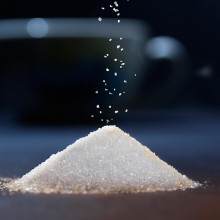
41:40 - Why do we crave sugar?
Why do we crave sugar?
with Jeffrey Friedman, Rockefeller University
Perhaps your New Year's Resolution is to go on a diet and strip off some of those pounds you put on by eating and drinking a bit too much over Christmas?
With Christmas and New Year now behind us, many people will be ruing the amount they ate over the festive period. But why do we crave - and thoroughly enjoy - sweet things?
Well, thanks to New York scientist Jeffrey Friedman we understand a little bit more, because he and his team have discovered a population of nerve cells in the brain - that communicate with each other using a nerve transmitter chemical called melanin concentrating hormone - which are the neurological basis for a sweet tooth.
Jeffrey - Sugar is a very attractive nutrient for two reasons. One, it tastes sweet, but it's also attractive because it has nutrient value. It's actually the nutrient value of sugar, meaning its ability to provide calories that explains a lot about why sugar or sucrose in particular is preferred to artificial sweeteners which don't have any nutrient value.
Chris - But I put it to you that lots of people do drink diet drinks or they do add sweeteners. So, they obviously do think that the flavour is quite nice. So, when you do subvert your sense systems into experiencing a sweet taste with no calories in it versus glucose which is obviously more calorie rich, how does the brain respond to that?
Jeffrey - If animals are given the choice between a natural sugar like sucrose or an artificial sweetener, they invariably prefer the natural sugar. The same is probably true in humans because all the statistics would seem to indicate sweetened sodas outsell diet sodas by a great margin. Now, it is true that many people use artificial sweeteners and in the short term of course, they'll find that satisfying, but what that doesn't tell you is whether they might go back and have sucrose in some other form later on - in the form of a candy bar or a candy. It certainly seems as if a lot of the intake of sugar and nutrient in general is unconscious and is driven by signals of the nutrient value that is present in our food.
Chris - Now, what actually detects that nutrient value then? So, when I put something sweet into my mouth, is it just the sweet taste and there is therefore a neurological inference of the calorie value of what I'm eating? Or is there integration of multiple analyses of the food - the calories coming in, plus the sweet taste or is the brain just looking at blood glucose and going, "Ah! I ate that Mars bar. Therefore, the sugar's gone up, therefore, it must be good for me"?
Jeffrey- The answer appears to be both. So, certainly a sweet taste such as either a sucrose or an artificial sugar is attractive. But it's attractive because it predicts that that nutrient or that compound you just ate will have calories or nutrient value in it. But if that taste is empty of calories, it won't be reinforced. What reinforces the desire to eat sweet things is ultimately the presence on top of it of calories, which are to some extent thought to be sensed by increase in the level of glucose in the blood. Unknown until recently however was where and how that glucose increase in the blood is sensed.
Chris - So, how did you probe that?
Jeffrey - A very talented colleague of mine Ana Domingos hypothesised that a particular nerve cell population in the brain referred to as MCH (melanin concentrating hormone) might have something to do with the sensing of sucrose and why it is preferred to sucralose. The reason that Anna hypothesised these neurons might play a role in sugar sensing is because firstly, the neurons can be shown to fire more rapidly when exposed to sugar and secondly because, if you kill these neurons, animals lose weight and weigh less. Those two published findings that Ana hypothesised that perhaps these neurons played some role in the sensing of sucrose in establishing of preference versus an artificial sweetener.
Chris - Do you think that sensing goes on when the glucose which has come from the sucrose goes into the brain or do you think that there are sensors for sweetness in the tongue, perhaps even in the intestine and they're telling those MCH cells in the brain, "Hey, I'm being stimulated by something sweet."?
Jeffrey - So, the experiment Ana did was in the first case kill all the MCH neurons. If you did that, animals could no longer distinguish between sucrose and sucralose. They now had an equivalent preference. Conversely, if she activated those neurons using some new experimental tools, she could switch an animal's preference to the artificial sweetener if it was linked to the activation of those neurons. This tells us pretty definitively that these neurons play some role in the sensing of sucrose. But it doesn't actually tell us whether or not the glucose itself or the sucrose itself is actually being sensed by these neurons or by some other group of neurons such as sweet sensors elsewhere in the body.
Chris - Where are these MCH neurons and what more importantly perhaps do they connect to?
Jeffrey - MCH neurons are present in the brain region known as the hypothalamus, in a particular region of the hypothalamus known as the lateral hypothalamus and this nucleus is generally thought to activate hunger. This particular hypothalamic region is intimately connected to reward circuits that play a role in changing the motivation for certain behaviours or certain preferences. And so, they're well positioned both to sense glucose signals directly or indirectly and then connect them to reward circuits.

Does peer pressure help with resolutions?
Molly Crockett - I think absolutely for several reasons. One is that you've got two minds and two sets of willpower working together to help you both achieve your goals. Two, one of the most powerful motivators is social reputation. We really, really care about what others think about us. It turns out also that having others think of us as being self-controlled is also a really good thing. So, that just adds an extra boost to the motivational processes behind your resolution.
Chris - Ben, anything to add?
Ben Gardner - I quite agree. I think it is really about keeping that motivation high because given that to form a habit, you need to repeat a behaviour consistently. One thing that people don't often realise when they're embarking on a habit formation attempt is that they'll have to repeat the behaviour so they need to keep going at it. So, anything that can boost your motivation in that respect must be a good thing.
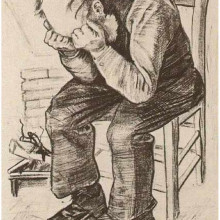
Why do resolutions become hard after a week?
Ben Gardner - Well, I can't actually speak for gyms, but I think this relates to the answer I just gave. I think that people often are willing to put in the effort at the start, but they don't actually have the kind of realistic forecast of what's going to be involved in doing a behaviour. It might be that they don't adequately plan how they're going to for example, keep going to a gym. It's one thing to plan when and where you're going to start going to a gym, but you need to make sure that you have this plan for keeping up. And I think that's the problem that people just find that actually, they can lapse back into their old habits and routines. If they don't plan adequately to cope for those kind of obstacles, then they will lapse. And so, that will be experienced as kind of dip in our willpower.Chris - Molly, what do you think?
Molly Crockett - I think the thing to add is that at this time of year, willpower and making resolutions is at the forefront of everyone's mind. It's central to our attention and so, it's easier to sort of think about and plan for those goals when it's at the front of your mind. But distractions tend to creep in and that can interfere with the goal directed process of trying to achieve those goals.

Why is new year a good time for resolutions?
Ben Gardner - I think it may be that we need often a kind of what's called a cue to action. We need something to give us that push to actually start making changes to our behaviour. So, something like for example, for smokers, a non-smoking day or for example, someone who wants to make a major change in their behaviour, a January resolution kind of window can help with that.
Ginny - Molly, have you got any ideas on that one?
Molly Crockett - I think perhaps the added social pressure of everyone else talking about their resolutions and what goals they're looking to pursue in the new year could help provide an extra sort of boost in motivation.

Are most new year resolutions too ambitious?
Molly Crockett - I think I would agree that you're more likely to keep your resolution if you make it manageable. There's a researcher at Stanford named B.J. Fogg who has done some work on this and shown that you just need to establish a habit but in order to carry on with the resolution but you're much more likely to do that if you start really small and manageable. Actionable items are really important.
Chris - Ben?
Ben Gardner - Yes, I think I'd agree with that. I think smaller changes are always better when it comes to kind of sustaining behaviour change. So, certainly kind of, start low go slow is one slogan that's often used to kind of describe that. We need to look at making quite small changes and then aim to help those build-up so that we can manage the larger changes by going slow.
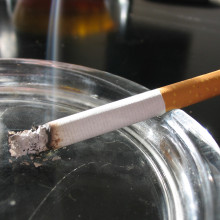
Do some people get addicted more easily?
Molly Crockett - I'm not an expert on this, but I do believe that there's some evidence that the structure of your dopamine system in the brain can make you susceptible to different kinds of addictions. This work was done actually by Barry Everitt at Cambridge and Trevor Robbins and that group. They found that, for example, a certain type of dopamine receptor in the striatum, the density of that receptor can make rats more or less susceptible to addictions, but I'm not sure the extent to which we know this in humans.
Ginny - I think there was also some work that suggested that rats that were more impulsive were also more likely to become addicted. So, they had a little test where when a light flashes on, the rat has to poke its nose in the box that has the light in order to get a reward. Rats who were likely to poke their noses in boxes before the lights came on, so were impulsive, seem to be more likely to become addicted when they were given drugs. Again, I don't know if that applies to humans yet or if it's just in the rat models.
Molly Crockett - I think yeah, absolutely, that work also has been done in Cambridge and I think it has been extended to humans that you can see in addicts that measures of impulsivity similar to the tests with the nose poke and the lights. People who are addicted to various substances are more impulsive on those kinds of tests certainly.

Does the menstrual cycle affect willpower?
Molly Crockett - I don't know the answer to that question actually, but certainly, the hormonal system is associated with the menstrual cycle interact with the dopamine system in the brain. This is work by Emily Jacobs and Mark D'Esposito. That has been done in the context of working memory I believe, but we do know that dopamine interacts with oestrogen. So, it's certainly plausible that this could be the case.
Chris - Ben?
Ben Gardner - The only thing I'd add to that is perhaps that actually, the expectation that that certain time of the month will lead to this particular cravings. It could've actually created a habit in more of a sense that I was referring to whereby experiencing that particular stimulus, in other words, that time of the month actually triggers that craving. And that may be occurring on top of any kind of chemical changes.
Chris - And also, it sort of chimes with what Barry Everitt was saying earlier about when he comes out of his front door and he's in a street that he recognises, and it normally is the way to work. On a Sunday, he sometimes ends up in work by accident. It's sort of, if you've got the environment setup around your menstrual cycle, there are lots of cues there that might cue you to want the sugar rather than purely the hormones.
Ben Gardner - Yes, I'd quite agree with that.

54:56 - Why do insects buzz around my light?
Why do insects buzz around my light?
Ian Burgess is the director of Insect Research and Development Ltd, in Cambridge...
Ian - The short answer is, nobody knows. There are lots of theories and some of those are a bit more logical than others, but most of them are definitely speculative and others are definitely disprovable. One suggestion is that moths mistake lights for the moon. The reason for that is because some moths that migrate use the moon to orientate which direction they're travelling. But that doesn't explain why nonmigrating moths - which is the vast majority of them - and other insects actually get confused by lights because the moon has no impact on them at all. Others suggests that maybe insects get dazzled. Well, that can't happen at a distance, and a candlelight or a camp fire - or even a spotlight if you're half a mile away - doesn't look very bright.
Some people speculate that the pheromones that female moths release produces a faint luminescence (glow), and that male moths can detect light in the environment and confuse those with the luminescence from the female pheromones. But that, of course, would only apply to males. What about the females? It seems that wavelength of light is important, and it has been noted that the newer white or bluish-white lights now used in street lamps are actually are more attractive to moths than the traditional organge sodium lights, that we've had for many years. But, again, it doesn't explain why insects that have been adapted for millions of years of evolution to fly about happily in the dark - and are quite normally conditioned to hide away from light during the day - should suddenly suicidally rush to all illuminated objects like cars and street lamps that are none of their business...
So, the answer is we really don't know!
- Previous Paracetamol: Chemistry in its element
- Next Now hear this










Comments
Add a comment